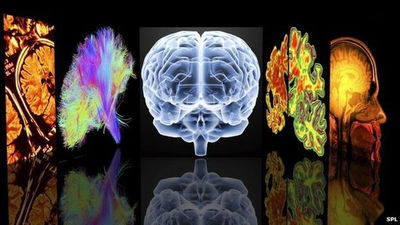New discovery awakens hair follicles in 'dormant mode', identifying molecule to treat male pattern baldness

A paper that identified a promising substance as a therapeutic agent for male pattern baldness, which is especially common in men, was published in the American scientific journal Developmental Cell. The discovery of a substance that switches the cells necessary for hair growth from 'dormant mode' to 'active mode' is expected to make it possible to treat thinning hair more effectively than existing therapeutic agents.
Hedgehog signaling reprograms hair follicle niche fibroblasts to a hyper-activated state: Developmental Cell
New Molecule Discovered That Strongly Stimulates Hair Growth
https://scitechdaily.com/new-molecule-discovered-that-strongly-stimulates-hair-growth/
Carle Illinois Student's Research Reveals Signaling Molecule as Key to Activating Hair Regrowth - Carle Illinois College of Medicine
https://medicine.illinois.edu/carle-illinois-students-research-reveals-signaling-molecule-as-key-to-activating-hair-regrowth/news
The hair follicle at the root of human hair contains a collection of cells called dermal papilla cells , which play an important role in hair growth. However, in male pattern baldness, dermal papilla cells become dysfunctional due to the action of male hormones, and the process of activating hair follicles is suppressed, resulting in gradual loss of hair growth.
In order for the cycle of regrowth and growth of hair that has fallen out to function normally, a stimulus that activates dormant dermal papilla cells is necessary, but what kind of substance activates dermal papilla cells? Little did I know until now.

Therefore, a research team led by Maksim Plikus, who teaches cell biology at the University of California, conducted an experiment to find out what chemical substances activate the function of dermal papilla cells.
The research team first studied mice with overactivated dermal papilla cells and more hair than usual. As a result, it was revealed that the substance 'SCUBE3' has a hitherto unknown function as a signal transducing substance that promotes hair growth.
``At different times in the hair follicle life cycle, the exact same dermal papilla cells emit signals that determine whether to keep the follicle dormant or to grow new hair,'' Plikus said of the findings. It became clear that SCUBE3, which is naturally produced by dermal papilla cells, tells the hair follicle stem cells next to the dermal papilla cells to start dividing and grow new hair.”
The research team that found a substance that activates dermal papilla cells next performed an experiment in which human hair follicles were transplanted into mice and then SCUBE3 was injected into the mouse skin. As a result, it was confirmed that both human and mouse hair follicles that had been in a dormant state grew newly.
Below is a photo of the hair grown by SCUBE3. The thick hair near the center is the hair that grew from the human hair follicle transplanted into the mouse, and the small hair around it is the mouse hair.

by Nitish Shettigar, Plikus lab
Co-lead author of the paper, Christian Guerrero-Juarez of the University of California, said, 'These experiments provide empirical data that SCUBE3 and its derivatives are promising therapeutic agents for alopecia.' increase.
At the time of writing this article, two types of drugs for treating male pattern baldness approved by the U.S. Food and Drug Administration are finasteride and minoxidil . Don't.
“With the strong need for new and effective alopecia treatments, naturally occurring compounds found naturally in dermal papilla cells are ideal next-generation drug candidates,” said Plikus. The study in the transplantation model validated the feasibility of safety investigations for clinical trials of SCUBE3,' he said, expressing his expectations for the discovery of new alopecia treatment drugs.
Related Posts:
in Science, Posted by log1l_ks







